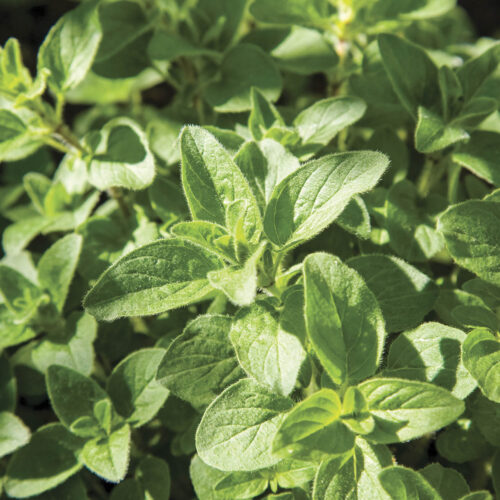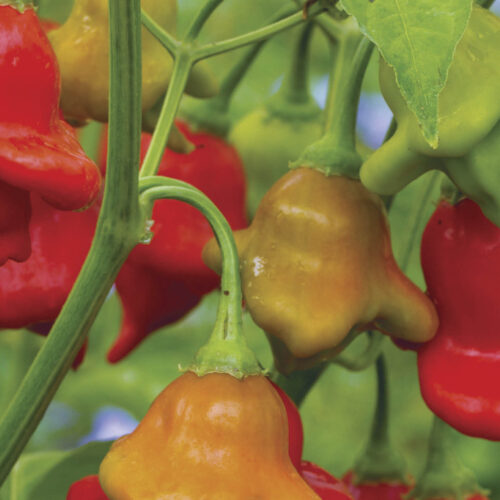Crazy for coriander
2016-05-24T01:27:24+10:00
PENNY WOODWARD says versatile coriander deserves a place in every garden.
Coriander, Coriandrum sativum, is also known as cilantro and Chinese parsley. It is one of the most ancient herbs still in use today and is also claimed by some to be the world’s most widely used herb. Whether this is true or not (I suspect that mint might beat it), coriander leaves, seeds and roots are essential to the cuisine of central and southern America, South-East and northern Asia as well as India and the Middle East, and so with our diverse multi-cultural society it is increasingly essential to Australian cuisine too.
Coriander comes originally from southern Europe where the seeds have been used for centuries. Coriander seeds have been found in Egyptian tombs dating from more than 3000 years ago. The Egyptians cultivated coriander in their gardens and offered it at funeral ceremonies. It was used by Hippocrates and other Greek physicians as early as the fifth century B. C., while the Chinese considered that coriander had the ability to bestow immortality. This plant has the distinction of being one of the few herbs mentioned in the Old Testament Num. 11:7 “Now the manna was like coriander seed.”
The botanical and common name, coriander, comes from the Greek word koris which means ‘bug’. This presumably relates to the fact that the smell and flavour of coriander has been unfavourably compared with that of stink bugs. This erect annual herb has lower leaves that are rounded and lobed, while the upper leaves are linear and finely dissected. Small flat umbels of pale pink flowers appear from mid-summer, and these are followed by fruits that are small green berries and which become brown and ridged when fully ripe. These drop very quickly once they are ripe and will self sow readily. The whole plant contains a fragrant volatile oil. There are now several cultivars that vary in flavour, size, leaf shape and tendency to bolt to seed in hot conditions.
Grow coriander from seed sown in autumn, winter and spring. Although I prefer autumn because then you get months of harvesting before plants even think about going to seed. Plant the seed where you want the plants to grow as plants don’t like being moved. Seed can take a while to germinate and it may be several weeks before the first young leaves appear. Thin to about 15 cm between plants.In areas with hot, dry summers, seedlings will go to seed very quickly, so in these places coriander is best planted in autumn.
Coriander does well in any good, nutrient-rich soil that is well drained. In most regions in Australia, coriander does best in partial shade, but in cooler regions grow it in full sun. Keep well watered. Start harvesting leaves after about 30 days. Leaves have the best flavour while the stems are still soft and before the flowers start to form.
Whole plants can be harvested for their roots at the same time. As the seeds ripen towards the end of summer their strong odour gives way to a sweet, orangy scent, when crushed. The seeds need to be harvested quickly, as they turn from green to brown, before they drop. Cut off the whole seed head and hang upside down in a paper bag, in a dry, airy, shaded position. When the seeds are dry, strip them from the stems and store in an airtight container out of direct light.
Coriander is a nutritious herb rich in calcium, phosphorous, beta carotene and vitamin C. It has an unusual, very strong taste when fresh, and both the leaves and roots are commonly used in Asian cooking. Leaves are used as garnish and to add fragrance to soups, meat dishes and particularly fish dishes. They are always added towards the end of the cooking process. Don’t bother drying the leaves as they don’t keep their flavour. The Chinese use leaves in dim sum stuffing and in soup. The Vietnamese use fresh coriander leaves in soups, salads and noodle dishes. Thais add fresh roots to a range of dishes and a combination of coriander root, garlic and pepper all crushed together is an essential seasoning in many Thai dishes.
The dried seed has a sweet, almost orangy, taste and is an important ingredient of most curry spice mixes. Ground coriander, cumin and turmeric are the basic ingredients of most curry powders. The flavour of the seeds is enhanced if they are lightly cooked in a dry frying pan and then crushed just before they are to be used. Dried powdered seed is used to disguise the flavour of some of the more unpleasant medicines, and chewing the seed stimulates gastric juices and aids digestion. Bruised seeds can be applied externally to rheumatic joints to relieve the pain. They are also used in baking to flavour bread and cakes, in confectionary and to flavour liquers.






